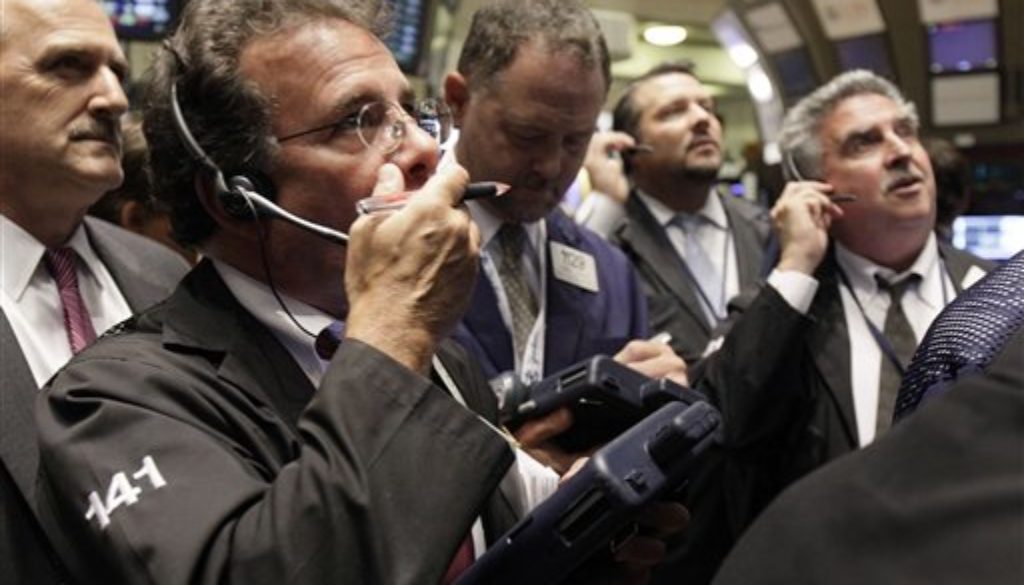90 Years After the Crash of ’29, Markets Are Once Again at Risk
By Barbara Roper, Consumer Federation of America
On October 29, 1929, the U.S. stock market capped a week of jitters by plunging another 12 percent in market value, panicking investors and ushering in a period of economic devastation unmatched in the United States before or since. Ninety years later, the very agency that was created to police the securities markets and prevent a recurrence of these cataclysmic events appears intent on recreating the conditions that led to the 1929 crash.
The story of the Crash of 1929 and the ensuing Great Depression is familiar to anyone with a passing knowledge of the nation’s history, vividly captured in iconic black-and-white images of bread lines and bank failures and fear haunted faces. But the sheer scale of the market failure remains difficult to grasp. Between 1929 and 1932, the Dow Jones Industrial Average lost 90 percent of its value. Roughly half of the new securities sold in the post-World War I decade were revealed to be either nearly or totally valueless.
For policymakers of the day the lesson was clear: never again would companies be permitted to sell their securities to the general public without first providing the “essential facts” necessary to estimate the securities’ worth. That simple principle of transparency, embodied in the Securities Act of 1933 and the Securities Exchange Act of 1934, was the bedrock on which this country built capital markets that were the envy of the world, fueling an extraordinary and extended period of economic growth and innovation.
Unfortunately, that lesson appears to have been forgotten in recent years. Today, as a result of policy changes adopted by Congress and the Securities and Exchange Commission (SEC) over the last four decades, tens of thousands of companies raise hundreds of billions of dollars each year in precisely the sort of opaque securities offerings that Congress had sought to outlaw in 1933. These “private” offerings — sold to institutions and wealthy individuals on the faulty premise the wealth and sophistication can substitute for access to information as an effective means of investor protection — now dwarf in both number and capital raised the transparent public offerings that Depression-era reformers insisted should be the norm.
This should come as no surprise to those who have watched Congress and the SEC systematically eliminate the incentives that companies have to conduct a public securities offering. First, they enabled companies to raise unlimited amounts of capital from institutions and wealthy investors through “private” offerings without providing basic disclosures. Then they loosened trading restrictions designed to keep private securities such as these out of the hands of the general public, and finally, they jacked up the number of shareholders a company can have without having to begin filing public financial reports.
Taken together, these actions have enabled multi-billion-dollar behemoths, with thousands of shareholders, to operate as private companies without the independent scrutiny necessary to discipline their excesses or accurately value their shares. The recent fiasco at WeWorks offers a sobering illustration of the shortcomings of private markets. Once a highly anticipated IPO, valued as high as $47 billion, WeWorks has now been taken over by its bankers, with a value of roughly $8 billion or less and growing questions about its continued viability.
This shift to private capital raising has been bad for investors. When promising companies choose to remain private for years, those who want to invest in these companies while they are still growing must forsake the transparent public markets for private markets, where information is scarce, liquidity is limited, pricing in inconsistent and unreliable, and trading costs are sky high. Individual investors are at a particular disadvantage in private markets, stripped of regulatory protections designed to ensure they operate on a level playing field and offered access to only those deals shunned by larger institutional investors.
Bad as it has been for investors, the deregulatory policies of the last four decades have been even worse for the health of our public markets. After decades of policies to promote private markets, there are roughly 1,000 fewer public companies today than there were at the start of this deregulatory experiment in the late 1970s. The decline is even more dramatic when measured against the peak years of the late 1990s, when there were more than twice as many public companies as there are today.
Ironically, the greatest threat to the public markets today emanates from the SEC, the very agency created in 1934 to protect investors and promote market integrity and stability. While some leaders in Congress have awakened to the threat our public markets face, the SEC appears poised to make the problem much worse. Most notably, a recent SEC concept release lays out a series of proposals that would greatly expand companies’ ability to sell opaque private securities to unsophisticated retail clients, including retirement savers. Meanwhile, the SEC is simultaneously weakening reporting requirements for public companies, making information available in the public markets less complete and reliable.
In pushing its deregulatory agenda, the SEC wraps it up in a populist message – about granting Main Street investors “access” to investment “opportunities” they have long been denied – while casually dismissing concerns about potential risks to investors and the harmful impact on public markets. This is a direct repudiation of its responsibility, outlined so clearly on its website, to ensure that “all investors, whether large institutions or private individuals … have access to certain basic facts about an investment prior to buying it, and so long as they hold it.”
On this 90th anniversary of the Crash of ’29, we call on the SEC to recommit to that mission of promoting transparent markets. To do so, it will need to reverse course on its current deregulatory private offering agenda and look instead to rebuild the health of our public markets. Ultimately, the stability and vitality of the U.S. economy could depend on it.

